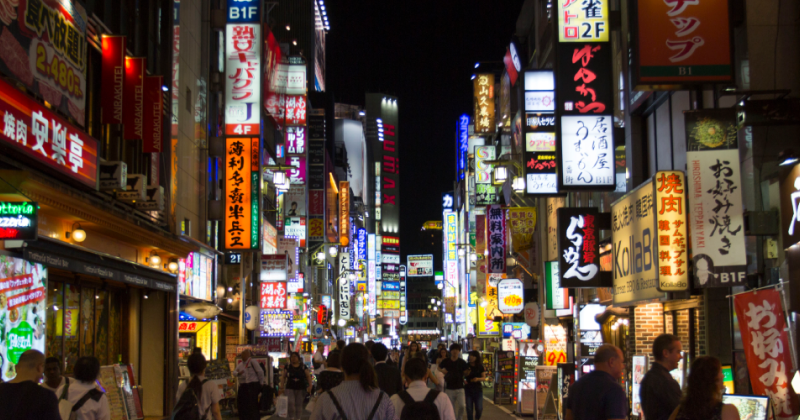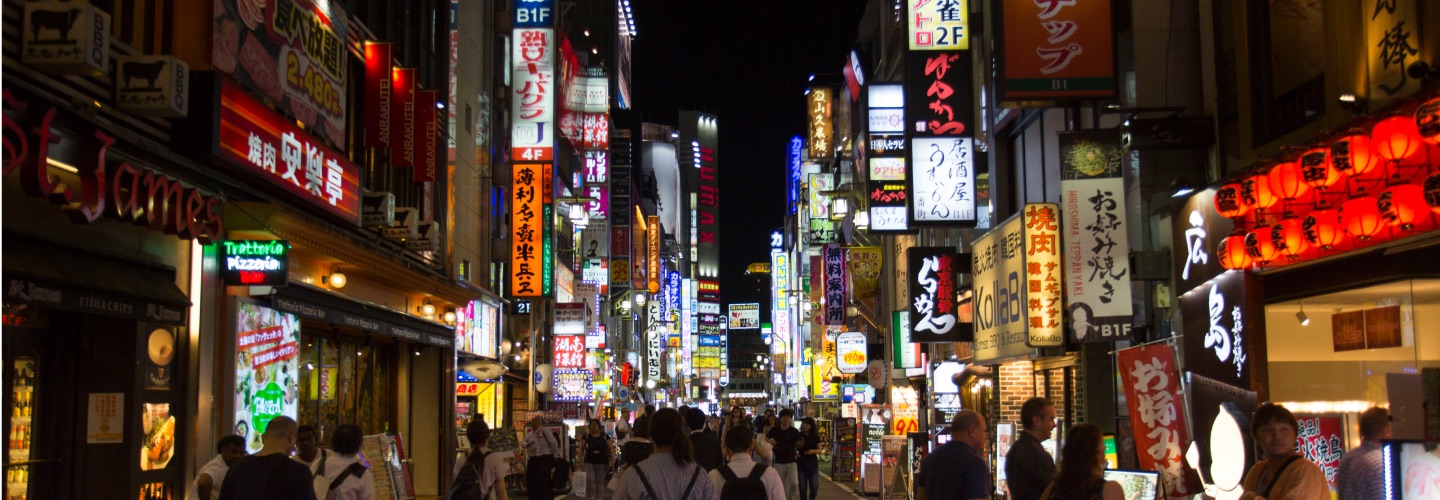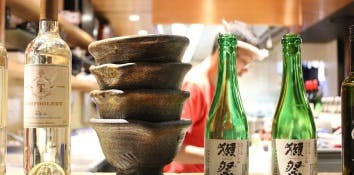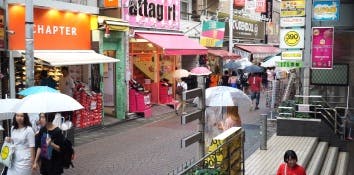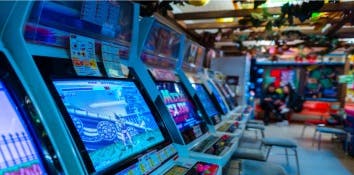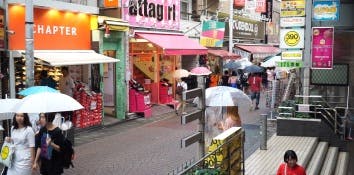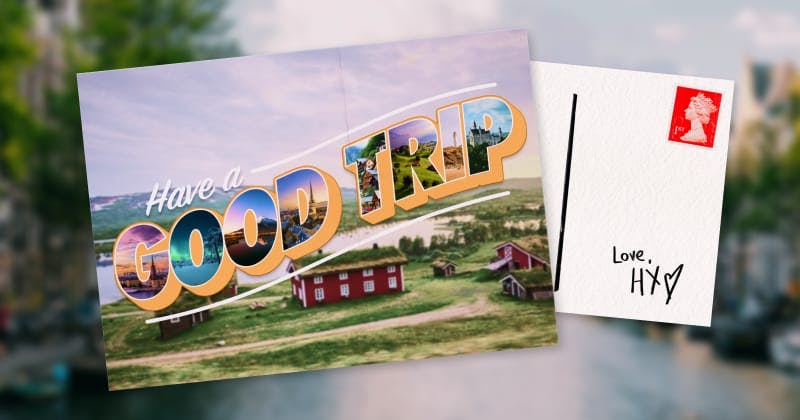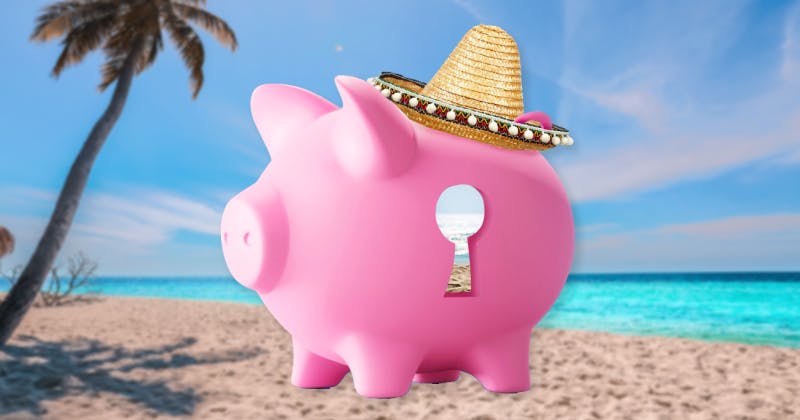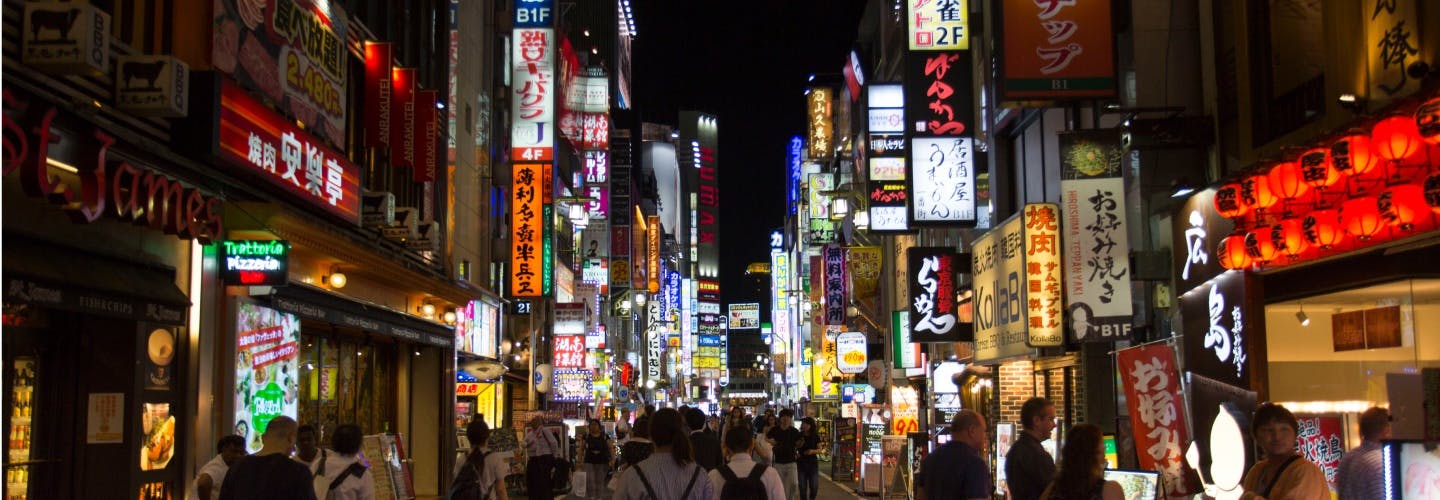
Tokyo Travel Guide
Kon'nichiwa intrepid explorers and welcome to our Tokyo travel guide – the best place to find out everything you need to know before you travel to Japan.
What you'll find in this guide:
Top things to do in Tokyo
Practical Information
Getting to Tokyo
Getting around Tokyo
Tokyo districts
What to eat in Tokyo
You can find more great video content on our YouTube channel
Holiday Extras Travel Guides
GMT +9
Yen JPY
Japanese
Type A & B
12 Hours
Practical Info
Culture and etiquette
Religion
The most common religions in Japan are Buddhism and Shintoism
Tipping
Do you need tip in Tokyo? Tipping isn't customary in Japan and can even be considered rude. There are rare situations where tipping may be expected but for the most but it's safer not to.
Smoking
Smoking is banned in most indoor public spaces and public transport, with some exceptions. It's also not allowed on public streets in busy districts – though you can find designated smoking areas.
Language 101
Japanese is the official language, though English is spoken in some parts of Tokyo and other big cities. It might be worthwile to learn a little Japanese in case you need it while you're there.
Hello - Kon'nichiwa
How are you? - O-genki desu ka
Yes - Hai
No - Iie
What's your name? - O-namae wa nan desu ka
My name is - Watashi no namae [name] desu
Please - Onegaishimasu
Thank you - Arigato gozaimasu
How much is it? - Ikura desu ka?
Where is? - Wa doko desu ka?
Numbers:
- One - Ichi
- Two - Ni
- Three - San
- Four - Shi, yon
- Five - Go
Goodbye - Sayonara
Jabs, visas and other advice
For up-to-date advice on jabs, visas and other foreign advice, we recommend following the government's website
Emergency numbers
110 for police. 119 for fire or ambulance.
Getting to Tokyo
Tokyo is a 13-hour, 6,000 mile flight from London and you'll land at one of its two international airports - Haneda which is around 13 miles south and Narita which is around 50 miles east of the city.
Getting from Haneda to Tokyo:
Monorail - The monorail takes you to Hamamatsucho station in 13 mins. From there you can take the Tokyo metro. Tickets cost ¥490 per adult and ¥250 per child. If you plan on getting the monorail from Haneda airport, it's remembering that the service runs between 9am and 7pm on weekdays and from 9am to 5pm on weekends and public holidays.
Airport Limousine - The Airport Limousine is a bus that takes 30 minutes to an hour to reach Tokyo. It stops at most of the city's major hotels and a single fare for an adult costs ¥1200 and ¥600 for a child. Prices increase to ¥2000 (adult) and ¥1000 (child) for the night service that runs between midnight and 5am.
Taxi - A taxi should take about half an hour depending on traffic. Prices vary depending on your drop-off but something between ¥5000-¥11,000 would be reasonable. There's also an extra 20% charge between 10pm and 5am.
Getting from Narita to Tokyo:
JR Narita Express - The JR Narita Express will have you in central Tokyo in an hour. If you're flying home from Narita make sure you ask at the ticket desk in arrivals for the discounted Round Trip ticket, which costs ¥4000 per adult and ¥2000 per child. Trains run on reduced schedules on Sundays, so if you're planning to fly home on this day check your train departure and allow plenty of time to get to the airport.
Taxi - A taxi will take over an hour even in good traffic. There are fixed fares for 6 different zones of Tokyo, with prices ranging from ¥16,000 to ¥26,000.
Airport Limousine - The Airport Limousine bus runs from Narita as well, taking between 90 mins and 2 hours, stopping at most major hotels in the centre of town. There are discounted tourist vouchers available at the ticket desk in arrivals and they cost ¥4500 per adult and ¥2250 per child.
Getting around Tokyo
Tokyo is huge. With a metropolitan area of 13,572 km² you could quite comfortably fit the Greater Tokyo area smack-bang in the middle of the UK and it would cover pretty much the whole of the midlands.
If you were planning to do most of your sightseeing on foot think again - without using the metro it'll be pretty impossible.
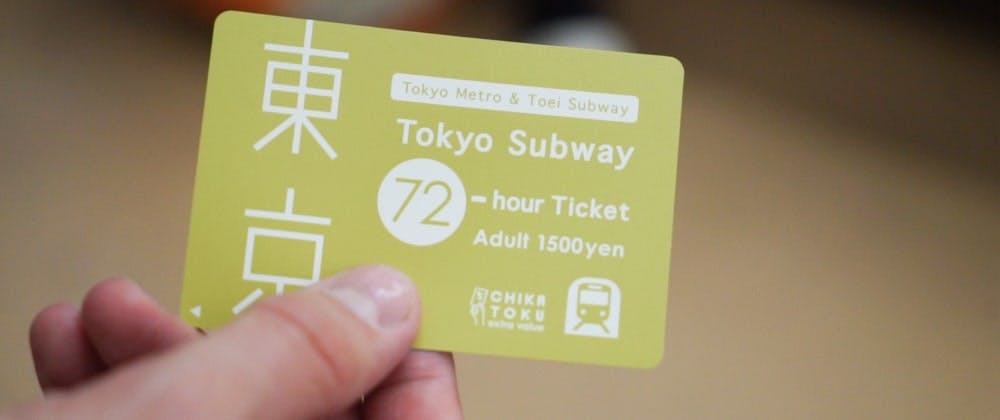
The metro can be pretty daunting at first glance - just the map alone can be little overwhelming to even the most seasoned traveller. It's run by two separate companies, Tokyo Metro and Toei Subway and both providers can require separate fares depending on which lines you use.
It's no exaggeration when we say that some of the subway stations are huge. Some have multiple entrances and exits onto different streets around the station making it very easy to get lost.
The Tokyo Metro Subway Map and Route Planner app is really helpful for navigating Tokyo's underground system. Google Maps and CityMapper are also as reliable as ever.
The best ticket option are tourist travel cards, available for 24, 48 and 72-hour unlimited travel on all Tokyo Metro and Toei Subway lines.
They're available at the Tokyo Metro information desks in Ueno, Ginza, Shinjuku and Omotesando stations, and you can pick them up at both airports and some hotels. You'll need proof that you're a tourist so make sure you have your passport with you.
Single tickets are available at vending machines at every metro station. They have an English language option and you can search by station to make sure you buy the right ticket.

Japan ranks 33rd on the Good Trip Index
This score is calculated based on Sustainability, Human Rights, Women's Rights, Press Freedom, Quality of Life, LGBTQI+ Rights and Animal welfare
Find out moreA guide to Tokyo's districts
We've already established that Tokyo is big. Nearly 38 million people live here (which is more than the entire population of Canada and 11 times the population of Iceland), so it's got to be pretty sizeable to fit all those bodies. The city itself is made up of 23 wards, each of which is split into many smaller districts that are all entirely different. Here's a look at some of Tokyo's most well-known central districts.
Chiyoda
Chiyoda City is a special ward in Tokyo. It's home to the Imperial Palace, which is the Emperor of Japan's official residence and the nearby Hibiya Park. You'll also find the National Museum of Modern Art, Tokyo and the impressive Yasukuni Shrine here.
Akihabara
Also in Chiyoda is Akihabara which is a hotspot for otaku, a Japanese word that describes anyone obsessed with anime, manga and videogames. This district is the place to go if you want to stock up on collectables and merchandise. It's full of weird and wonderful things, like maid cafés, plenty of cosplay and some of the strangest department stores we've ever seen. It's a real eye-opener and definitely something that needs to be seen on any trip to Tokyo.
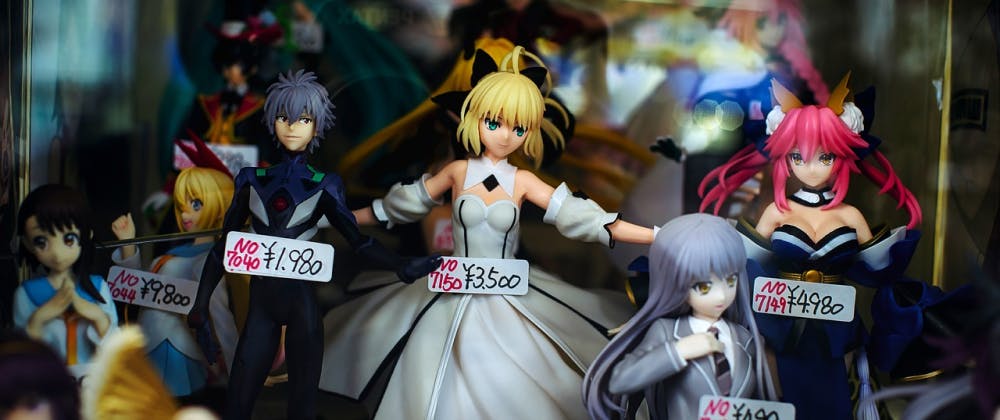
Chuo
The word Chuo literally means 'central ward' and is the city's old commercial centre, with a huge concentration of commercial businesses, offices and retail. The Chuo ward is home to Ginza & the Tsukiji Fish market.
Shibuya
Shibuya is home of the iconic Shibuya Crossing. Think of Tokyo and we guarantee this is exactly what springs to mind. Think hustle and bustle of thousands of people, think neon lights and that ultra-modern, futuristic city in pretty much every Sci-fi film you've ever watched, minus the flying cars… for now.

Ginza
Ginza is the place to go if you have some serious money to burn! With up-market shopping malls and flagship department stores, not to mention boutiques, art galleries and high-end restaurants, you'll have no problem spending a small fortune very quickly.
Harajuku
Harajuku is a district of Shibuya and a cultural Mecca for the youngest and trendiest of Japan's residents.
Everything here is about fashion and being on-trend, which has a major influence on everything in this area – expect exclusive boutiques, gourmet street food and generally anything that anybody who's anybody just needs.
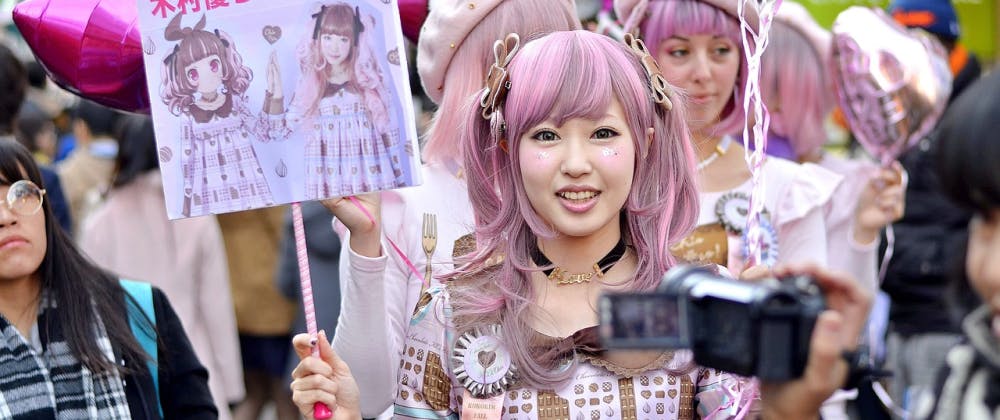
Taito
The ward of Taito is one of Tokyo's smallest, both in terms of area and population of people. It's home to many temples such as Sensoji, which happens to be Tokyo's oldest, and Asakusa Shrine - one of the only buildings in the area that survived World War II.
Shinjuku
Shinjuku is in central Tokyo and the largest of the wards that make up the main city. The immediate area around the train station includes a large concentration of businesses, entertainment and shopping and is home to the city's tallest skyscrapers, including the Metropolitan Government Office. Kabukicho is Japan's largest red light district and can also be found in Shinjuku.
Oh, and there's also a giant lizard who lives on Godzilla Street. Fun fact: In Japanese, it's pronounced GOJ-IRRA.
 Top
TopWhat to eat in Tokyo
It's no exaggeration that the food scene in Tokyo surpasses all other cities. In 2020, Tokyo remained the city with most Michelin Stars for the 10th year running with over 220 preferred establishments, beating the number of stars held by Paris, New York and London combined.
Japanese dining etiquette
Table manners differ from Western traditions, like slurping your ramen for example. Doing so is deemed a sign of great appreciation and therefore the more gusto, the more grateful you are.
Also, who doesn't love the opportunity to kick off your shoes and sit on the floor? Some restaurants in Tokyo have lowered tables and the soft flooring called Tatami, which allows you to do just that when you eat.
To make it easier, remember these important notes on Japanese etiquette when dining out in Tokyo:
- Shoes and slippers off
- Wet towels are for your hands, not your face
- It's polite to wait for all dishes to arrive before tucking in
- Pick up small bowls and lean into bigger ones
- When finished, leave dishes how they arrived (lids on etc)
- It's polite to serve each other alcohol, rather than yourself and always sip before a refill
Vending machines in Tokyo
If you want food on the go, vending machines selling all sorts of snacks and drinks are everywhere, but they only accept cash.
Despite there being vending machines pretty everywhere you turn, you won't see many people eating on the go, unless it's at the vending machine itself. Food and dining in Japan is a big deal, so mealtimes and snacks expect your full attention. Eating in public is fine, but find a park bench to sit and enjoy.
Top